by Roger Ebert
David Fincher’s “The Social Network”is emerging as the consensus choice as best film of 2010. Most of the critics’ groups have sanctified it, and after its initial impact it has only grown it stature. I think it is an early observer of a trend in our society, where we have learned new ways of thinking of ourselves: As members of a demographic group, as part of a database, as figures in…a social network.
My best films list also appears on my main site, but I am posting it here on the blog so that you can comment on it. In response to the reader protests of recent years, I’ve returned to the time-honored tradition of ten films arranged in order from one to ten. After that, it’s all alphabetical. The notion of objectively ordering works of art seems bizarre to me.
Here are the year’s best feature films:
- “The Social Network.” Here is a film about how people relate to their corporate roles and demographic groups rather than to each other as human beings. That’s the fascination for me; not the rise of social networks but the lives of those who are socially networked. Mark Zuckerberg, who made billions from Facebook and plans to give most of it away, isn’t driven by greed or the lust for power. He’s driven by obsession with an abstract system. He could as well be a chessmaster like Bobby Fischer. He finds satisfaction in manipulating systems.
The tension in the film is between Zuckerberg and the Winklevoss twins, who may well have invented Facebook for all I know, but are traditional analog humans motivated by pride and possessiveness. If Zuckerberg took their idea and ran with it, it was because he saw it as a logical insight rather than intellectual property. Some films observe fundamental shifts in human nature, and this is one of them.
David Fincher’s direction, Aaron Sorkin’s screenplay and the acting by Jesse Eisenberg, Justin Timberlake and the others all harmoniously create not only a story but a world view, showing how Zuckerberg is hopeless at personal relationships but instinctively projects himself into a virtual world and brings 500 million others behind him. “The Social Network” clarifies a process that some believe (and others fear) is creating a new mind-set.
“The Kings Speech.” Here, in a sense, is a first step in a journey that could lead to the world of “The Social Network.” Prince Albert (Colin Firth), who as George VI would lead the British Empire into World War Two, is seen in an opening scene confronting a loud-speaker as he opens the Empire Games. He is humiliated by a paralyzing stutter. The film tells the story of how his wife Elizabeth (Helena Bonham-Carter) involves him with a rough-hewn Australian speech therapist (Geoffrey Rush), whose unorthodox methods enable him to eventually face a BBC microphone and forcefully inform the world that the empire was declaring war.
All of the personalities and values in “The King’s Speech” are traditional (and the royal values are too traditional, the therapist believes). Tom Hooper’s filmmaking itself is crafted in older style, depending on an assembly of actors, costumes, sets, and a three-act structure. The characters project considered ideas of themselves; “The Social Network,” in contrast, intimately lays its characters bare. From one man speaking at a distance through the radio, to another man shepherding hundreds of millions through a software program, the two films show techology shaping human nature.
A difference between them is that we feel genuinely moved by the events in “The King’s Speech.” We identify. While some people may seek to copy the events in “The Social Network,” few, I think, would identify with those characters. Mark Zuckerberg is as much a technology-created superhero as Iron Man.
- “Black Swan.” And now we leave technology and even reality behind, and enter a world where the cinema has always found an easy match: Fantasy. That movies were dreamlike was understood from the very beginning, and the medium allowed directors to evoke the psychological states of their characters. “Black Swan” uses powerful performances by Natalie Portman and Vincent Cassel to represent archetypal attributes: Female/male, young/old, submissive/dominant, perfect/flawed, child/parent, good/evil, real/mythical.
Tchaikovsky’s “Swan Lake” provides a template for a backstage story that seems familiar enough (young ballerina tries to please her perfectionist mother and demanding director). Gradually we realize a psychological undertow is drawing her away from reality, and the frenzy of the ballet’s climax is mirrored in her own life. This film depends more than many others on the intensity and presence of the actors, and Portman’s ballerina is difficult to imagine coming from another actor.
“I Am Love.” In this film and “Julia” (2008), Tilda Swinton created masterful performances that were largely unseen because of inadequate distribution. Is it an Academy performance if no one sees it? Here she easily clears a technical hurdle (she is a British actress speaking Italian with what I understand is a Russian accent), playing Emma, a Russian woman who has married into a large, wealthy and guarded Milanese family.
She isn’t treated unkindly, at least not in obvious ways, but she doesn’t…belong. She is hostess, mother, wife, trophy, but never member. Now her husband and son are taking over the family dynasty, and her life is in flux. When she learns her daughter is a lesbian, she reacts not as an Italian matriarch might, but as the outsider she is, in surprise and curiosity. She has heard of such things.
Now she meets a young chef named Antonio (Edoardo Gabbriellini), a friend of her son’s. A current passes between them. They become lovers. There are many ways for actors to represent sex on the screen, and Swinton rarely copies herself; here as Emma she is urgent as if a dam has burst, releasing not passion but happiness. She evokes Emma as a woman who for years has met the needs of her family, and discovers in a few days to meet her own needs. She must have been waiting a long time for Antonio, whoever he would be.
- “Winter’s Bone.” Another film with its foundation on a strong female performance. Jennifer Lawrence plays Ree, a girl of 17 who acts as the homemaker for her younger brother and sister in the backlands of the Ozarks. Her mother sits useless all day, mentally absent. Her father, who was jailed for cooking meth, is missing. She tries to raise the kids, scraping along on welfare and the kindness of neighbors.
When the family is threatened with homelessness, she must find her father, who skipped bail. She sets out on an odyssey. At its end will be Ree’s father, dead or alive. Unless there is a body her family will be torn apart. She treks through a landscape scarcely less ruined than the one in Cormac McCarthy’s The Road. Debra Granik, the director and co-author, risks backwoods caricatures and avoids them with performances that are exact and indelible, right down to small supporting roles. Ree is one of the great women of recent movies.
“Inception.” A movie set within the architecture of dreams. The film’s hero (Leonardo DiCaprio) challenges a young architect (Ellen Page) to create such fantasy spaces as part of his raids on the minds of corporate rivals. The movie is all about process, about fighting our way through enveloping sheets of reality and dream, reality within dreams, dreams without reality. It’s a breathtaking juggling act by writer-director Christopher Nolan, who spent 10 years devising the labyrinthine script.
Do dreams “have” an architecture? Well, they require one for the purposes of this brilliantly visualized movie. For some time now, I’ve noticed that every dream I awaken from involves a variation of me urgently trying to return somewhere by taking a half-remembered way through streets and buildings. Sometimes I know my destination (I get off a ship and catch a train but am late for a flight and not packed). Sometimes I’m in a vast hotel. Sometimes crossing the University of Illinois campus, which has greatly changed. In every case, my attempt is to follow an abstract path (turn down here and cut across and come back up) which I could map for you. “Inception” led me to speculate that my mind, at least, generates architectural pathways, and that one reason I responded to “Inception” is that , like all movies, it was a waking dream.
- “The Secret in their Eyes.” This 2009 film from Argentina won the Academy Award for best foreign film of 2010. But it opened in 2010 in the U.S., and so certainly qualifies. It spans the years between 1974 and 2000 in Buenos Aries, as a woman who is a judge and a man who is a retired criminal investigator meet after 26 years. In 1974 they were associated on a case of rape and murder, and the man still believes the wrong men were convicted of the crime. The whole case is bound up in the right wing regime of those days, and the “disappearances” of enemies of the state.
Although the criminal story is given full weight, writer-director Juan Jose Campanella is more involved in the romantic charge between his two characters. No, this isn’t a silly movie love story. These are adults–experienced, nuanced, survivors. Love has very high stakes for them, and therefore greater rewards. Soledad Villamil and Ricardo Darin have presence and authority that makes their scenes together emotionally meaningful, as beneath the surface old secrets coil.
“The American.” George Clooney plays an enigmatic man whose job is creating specialized weapons for specialized murders. He builds them, delivers the, and disappears. Now someone wants him to disappear for good. A standard thriller plot, but this is a far from mainstream thriller. Very little is explained. There is a stark minimalism at work. Much depends on our empathy. The entire drama rests on two words, “Mr. Butterfly.” We must be vigilant to realize that once, and only once, are they spoken by the wrong person — and then the whole plot reality rotates.
A few of my colleagues admired this film by Anton Corbijn very much. Most of them admired it very little. I received demands from readers that I refund their money, and messages agreeing that there was greatness here. “The American” reminded me of “Le Samourai” (1967) by Jean-Pierre Melville, which starred another handsome man (Alain Delon) in the role of an enigmatic murder professional. The film sees dispassionately, guards its secrets, and ends like a clockwork mechanism arriving at its final, clarifying tick.
- “Kids Are All Right.” There are ways to read that title: Kids in general are all right, thee particular kids are all right, and it is all right for lesbians to form a family and raise them. Each mother bore one of the children, and because the same anonymous sperm donor was used, they’re half-siblings. The mothers and long-time partners are played by Julianne Moore and Annette Bening, and like many couples, they’re going through a little mid-life crisis.
Their children (Mia Wasikowska and Josh Hutcherson) unexpectedly contact their birth father (Mark Ruffalo), and the women are startled to find him back in their lives. It was all supposed to be a one-time pragmatic relationship. Ruffalo plays him as a hippie-ish organic gardener for whom “laid back” is a moral choice. He thinks it’s cool to meet his kids, it’s cool their moms are married, it’s cool they invite him for dinner. I mean…sure, yes, of course…I mean, why not? Sure. In a comedy with some deeper colors, the film is an affirmation of–family values.
“The Ghost Writer.” In Roman Polanski’s best film in years, a man without a past rattles around in the life of a man with too much of one. A ghost writer (Ewan McGregor) is hired to write the autobiography of a former British Prime Minister so inspired by Tony Blair that he might as well be wearing a name tag. He comes to stay at an isolated country house like those in the Agatha Christie mysteries, in which everyone is a potential suspect. His wife Ruth (Olivia Williams), smart and bitter, met Lang a Cambridge. His assistant Amelia (Kim Cattrall), smart and devious, is having an affair with him. The writer comes across information that suggests much of what he sees is a lie, and his life may be in danger.
This movie is the work of a man who knows how to direct a thriller. Smooth, calm, confident, it builds suspense instead of depending on shock and action. The actors create characters who suggest intriguing secrets. The atmosphere — a rain-swept Martha’s Vineyard in winter — has an ominous, gray chill, and the main interior looks just as cold. The key performances are measured for effect, not ramped up for effect. In an age of dumbed-down thrillers, this one evokes a classic tradition.
Special Jury Awards. Film festivals like to give Special Jury Prizes for films which they have a special admiration for, beyond the usual parameters of winners. My Awards this year go to:
“127 Hours.” Aron Ralston went hiking in the wilderness without telling anyone where he was going, and then, in a deep, narrow crevice, got his forearm trapped between a boulder and the canyon wall. Oops. Suddenly his world became very well-defined. There was the crevice. There was the strip of sky above, crossed by an eagle on its regular flight path. There were the things he brought with him: A video camera, some water, a little food, his inadequate little tool. It doesn’t take long to make an inventory. He shouts for help, but who can hear?
For most of the film Danny Boyle deals with one location and one actor, James Franco. He preys on our own deep fear of being trapped somewhere and understanding that there doesn’t seem to be any way to escape. “127 Hours” is like an exercise in conquering the unfilmable. It achieves the delicate task of showing an arm being cut through without ever quite showing it. For the audience the worst moment is not a sight but a sound. Most of us have never heard that sound before, but we know exactly what it is.
Tom and Gerri are a long-married couple, played by Jim Broadbent and Ruth Sheen, and they seem in complete accord about their life together. They garden, they work, they welcome their friends, they hope their son will find the right girl, they are in love. Their steadfast joy in each other’s company is essential, I believe, to provide the film with a center around which the characters revolve. Remarkably, these days, their 30-year-old son loves them and is happy, and they have no “issues.”
Theirs is the home poor Sally (Lesley Manville) comes to when she realizes she has made no home of her own. As Leigh’s film grows through spring, summer, autumn and winter, it involves the lives touched by Tom and Gerri (yes, they smile about their names). In particular they observe Mary, who is single, lonely, getting older, and alcoholic. “It’s a shame,” Tom says at one point after she’s ended yet another sad visit, and that’s all he has to say.
These people are not us, and yet we know them. They attend the funeral of Tom’s sister in law, and we have never been to a funeral quite like it, and yet it is like many funerals. The uninvolved clergyman, the efficient undertakers, the remote father, the angry son, the handful of neighbors who didn’t know the deceased all that well, the family skeletons. In particular, notes of social embarrassment that Leigh specializes in; the ways people display their anguish without meaning to.
And now I add yet another Special Jury Prize Winner. Oh, I’m the first to agree this has grown absurd. I stupidly tripped over the technicality that it had not yet opened in Chicago. Now I must contort myself to find it a place within the arbitrary confines of this list system. Next year I will simply issue an alphabetical list of 30 good films, I vow I will. The idea is to praise films I loved. What do conventions have to do with it?
“Somewhere.” Sofia Coppola’s film gazes dispassionately into the empty eyes of a movie star who has reached the end of his will. Johnny Marco sits in his room at the Chateau Marmont, legendary West Hollywood hotel for generations of Hollywood hideouts, and finds himself a hollow man. Sex is a mechanical process. He uses drinks and takes drugs and gets a little wound up but pleasure doesn’t seem to be involved. He demonstrates the truth that if you stare long enough at a wall, it will break the monotony if blonde twins do pole dances in front of it.
Stephen Dorff plays Marco. He is famous and successful. He is divorced, and when his 11-year-old daughter (Elle Fanning) spends a few days with him, he is polite and dutiful and seems to feel nothing. He goes through the motions of a publicity tour, an awards ceremony in Milan, a detailed session for complex makeup, and hardly seems present.
Don’t distinguish what he feels with the word existential. It has nothing to do with philosophy. He believes he amounts to nothing, and it appears he’s correct. This is called depression, but it may simply be a realistic view of the situation. Coppola, as always, communicates her feelings by what she looks at and how. It is all gaze and detail. She was a little girl and later a young actress on the sets of her father’s movies. We can only speculate about what she understood about this world right from the start. She played Michael Corleone’s baby.
Now for the second ten best films. These are alphabetical, because ranking films in order is pointless after a certain point. They’re all worthy of your time.
“All Good Things.” In 1982 the wife of a New York real estate investor disappeared without a trace. In 2000, his best friend was found murdered. In 2001, he admitted he killed a neighbor and chopped her up, throwing the pieces away in trash bags. He said it was self-defense. The wire is still missing. No one was ever charged in the death of the friend. He is in jail for the admitted crime, with a sentence adjusted because the jury believed some self defense may have been involved. “All Good Things” is based on fact.
The facts include the deep involvement of the man’s father in operating real estate in the sleazy underbelly of 42nd Street. The father is played here by Frank Langella, smooth and dangerous, and the son by Ryan Gosling, whose marriage to Kirsten Dunst becomes a country idyll before his father all but orders him back to the city. Andrew Jarecki’s film clearly insinuates what really happened, and reminded me of Barbet Schroeder’s “Reversal of Fortune,” about the Sunny von Bulow murder. In both cases, what seems to be obvious pathology is impervious to logic.
“Carlos.” came in two versions: One over five hours long, which I saw, and one closer to ordinary feature length, which most people will see in wider release or on cable. Written and directed by Olivier Assayas, a French filmmaker whose projects are usually more tightly focused, this is the epic story of the terrorist known as Carlos the Jackyl (Edgar Ramirez), who operated in the years between 1975, when he led a raid on OPEC oil ministers in Vienna, until 1994, when he was betrayed by former comrades, arrested in Sudan, and returned to France for trial.
The film suggests that much of his behavior wasn’t ideological in origin, but grew from megalomanic. He kills for many causes, but the primary motive seems to be his own twisted ego, his need to dominate and enforce his will. Assayas uses an enormous canvas and many period locations to portray an elusive man who seemed for a long time to be immune to the law. Recently, from prison, he complained that this film is inaccurate.
“Chloe.” Atom Egoyan’s film centers on Julianne Moore and Liam Neeson, as a Toronto married couple, and Amanda Seyfried as the young call girl who enters their lives. The wife, concerned her husband may be cheating, hires the prostitute to “test” him, and listens avidly to the girl’s accounts of her life. Seyfried plays the title character as a powerfully erotic young woman with personal motives that are hidden — from Moore, and from us. “Chloe” begins as a film involving eroticism, take the form of thriller, and then undergoes a sinister transformation into the story of hidden motives that seem to flow counter to the apparent direction of the story. Egoyan is a master of the psychosexual, and here his sensuous character reproduces the feelings and doubts all three characters inspire. Click here for video of Ebert’s Conversation with Atom Egoyan.
“Greenberg.” The hero of Noah Baumbach’s film was years ago, part of a rock band on the brink of a breakthrough. Greenberg (Ben Stiller) walked away from it and never explained why. He fled Los Angeles and became a carpenter in New York. Now he’s back in LA, house-sitting his brother’s house. His life isn’t on Hold, it’s on Stall.
His life is upended when he meets Florence (Greta Gerwig, in a career-making performance). She is on Hold: Just out of college, and no job. She has health and abundant energy. She’s happy with a purpose. On the other hand, we can’t stand Greenberg. But we begin to care about him. Without ever overtly evoking sympathy, Stiller inspires identification. You don’t have to like the hero of a movie. But you have to understand him — better than he does himself, in some cases.
“Hereafter.” Clint Eastwood’s film was the sort of inward, spiritual film he doesn’t make; it considers the idea of an afterlife with tenderness, beauty and a gentle tact. It deals with a few characters who all have issues that involve an afterlife. Matt Damon plays a man who sincerely believes he communicates with the dead, but has fled that ability and taken a low profile job. Cecile De France plays, a newsreader on French television. Bryce Dallas Howard is a young cooking student with a fearful dark place inside. Richard Kind is a man mourning his wife. George and Frankie McLaren play twin brothers, one who is struck by a truck and killed.
The Damon character becomes the link between all of them. He seems to have an authentic power, though what it proves is hard to say. Nothing he says need come from the other side. There is a moment handled with love and delicacy in which he says something that is either true or isn’t, but is a kindness either way. In that moment perhaps Eastwood is hinting that whether or not there is an afterlife, what we do in this one is what counts.
“Monsters.” Gareth Edwards’ film is one where the aliens are truly alien. It is so effective precisely because it doesn’t showcase them endlessly savaging the earth. It makes them mysterious, sensed but rarely seen, their motives and even their forms incompletely glimpsed. Involving a journey from Mexico to the U.S. through an “Infected Zone,” where 50-foot high spidery floaters pulse with an inner glow. It demonstrates that by making aliens too literal, it robs them of their menace and reduces them to special effects.
The film stars Scoot McNairy and Whitney Able as a photographer and the daughter of his publisher. Not by nature compatible, they share a journey that itself becomes the film. It is through wastelands of desolation like those in “The Road.” “Monsters” are glimpsed but not understood. Then there’s a breathtaking final sequence combining uncommon suspense and uncanny poetry, where their motives are made clear. Edwards evokes the awe and beauty he’s has been building toward, and we fully realize the film’s ambitious arc.
“Never Let Me Go.” Mark Romanek’s adaptation of Kazuo Ishiguro’s novel imagining a society within the larger one consisting of children who were created in a laboratory to be Donors of body parts. They know this and accept it. They live within a closed world whose value system takes pride in how often and successfully they have Donated. Carey Mulligan, Andrew Garfield and Keira Knightley star as three Doners now in their 20s.
This is a meditative, delicate film, directed sensitively, with actors who find the balancing point between their understanding of realigy and ours. These poor characters are innocent. They have the same hopes everyone has. It is so touching that they gladly give their organs to us. Greater love hath no man, than he who gives me his kidney, especially his second one.
rabbit_hole.jpg
“Rabbit Hole.” Eight months after the death of their child, a couple remains frozen in sadness and uncertainty. Nicole Kidman and Aaron Eckhart are no longer sleeping together or, actually, feeling married. They try grief counseling, and join an encounter group which she rejects but he returns to. Sandra Oh provides an insightful performance of a woman who seems to have embraced recovery as a lifestyle.
The director is John Cameron Mitchell, adapting David Lindsay-Abaire’s play. He treats this situation with respect, but with a certain redeeming humor — not, comedy, but the kind of deep good humor that can finally creep in late in a period of mourning as life begins to stir again. Kidman and Eckhart are well-suited; good-looking, confident people who suddenly are at a loss about how to live their lives.
secrtt.jpg
“Secretariat.” was one of the most thrilling and moving entertainments of the year, the story of the greatest race horse of all time. Walking into the theater, everyone knew it would win with the Triple crown and the historic victory at Belmont. Yet the audience cheered anyway — not in surprise, I think, but in exhilaration. “Secretariat” is a movie that allows us to understand what it really meant.
This isn’t a cornball formula film. It doesn’t have a contrived romance. It’s certainly not about an underdog. It is a great film about greatness, the story of the horse and the no less brave woman who had faith in him. Penny Chenery is played by Diane Lane, and John Malkovich and Nelsan Ellis provide counterpoint as Secretariat’s trainer and groom. The best general film of the year.
“Solitary Man.” Michael Douglas in the kind of role he plays best, a sinner. His character was once a regional celebrity as “New York’s Honest Car Dealer.” That went wrong, but he’s still as persuasive as–well, as a good car dealer. In business he can sense what car to put you in. In sex he cans sense what mood to put you on. He closes a lot of deals.
He cheated on his wife (Susan Sarandon). He disappointed their daughter (Jenna Fischer). He cheats on his companion, (Mary-Louise Parker). He uses the offer of his experience in life to charm a college student (Jesse Eisenberg), and then betrays him. Eventually he is back where he began in college, behind the same counter of a greasy spoon run by an old pal (Danny DeVito). Directed by Brian Koppelman and David Levien, this is one of his best performances.
Overall, 2010 was not a great movie year, but it has many great movies. In days to come on my blog I’ll write in more detail about the best in the categories of Documentaries, Foreign, Animation, Thrillers, Indies. Why categories? They provide a way to list more good films. If a “best film” list serves any purpose, it’s to give you ideas.

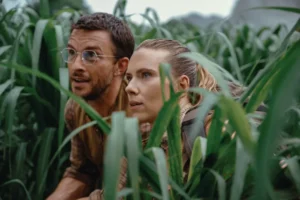

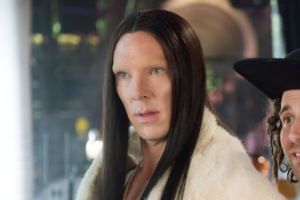

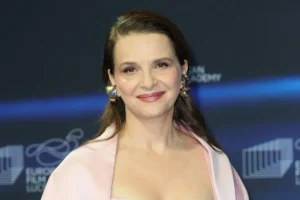
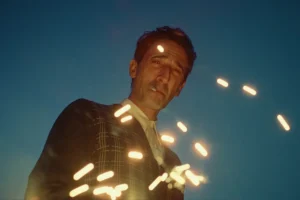




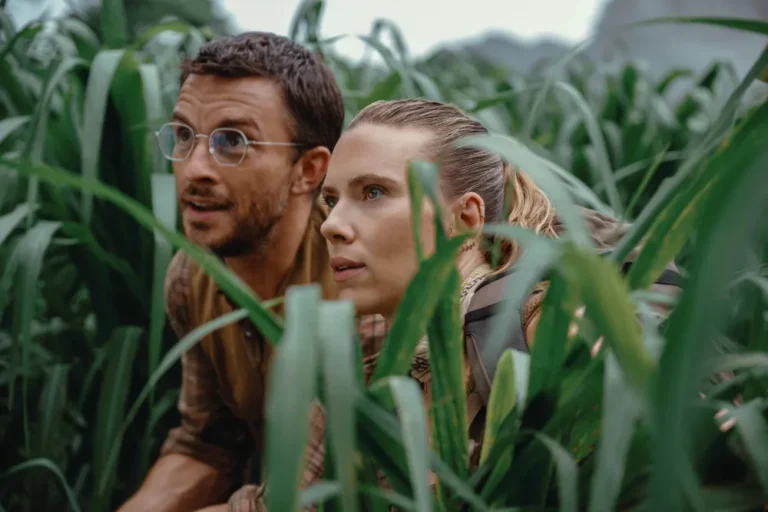


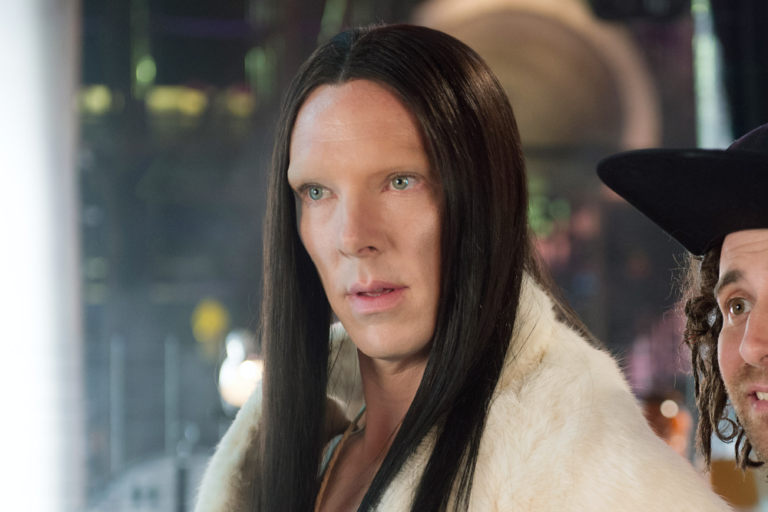
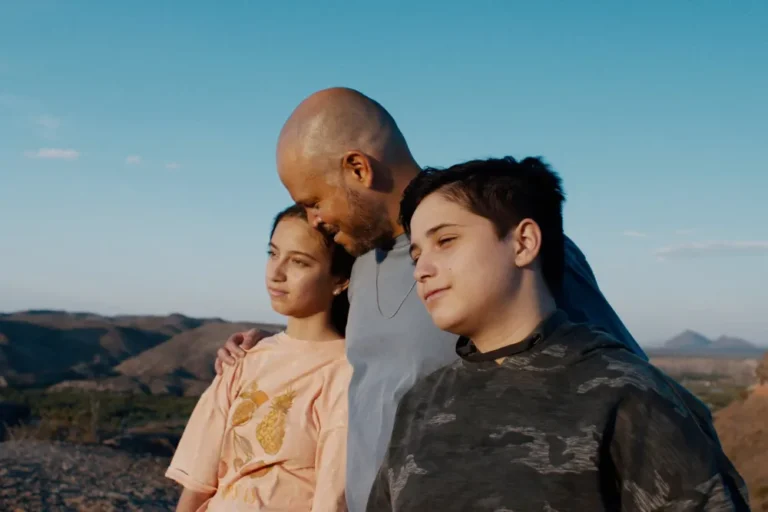
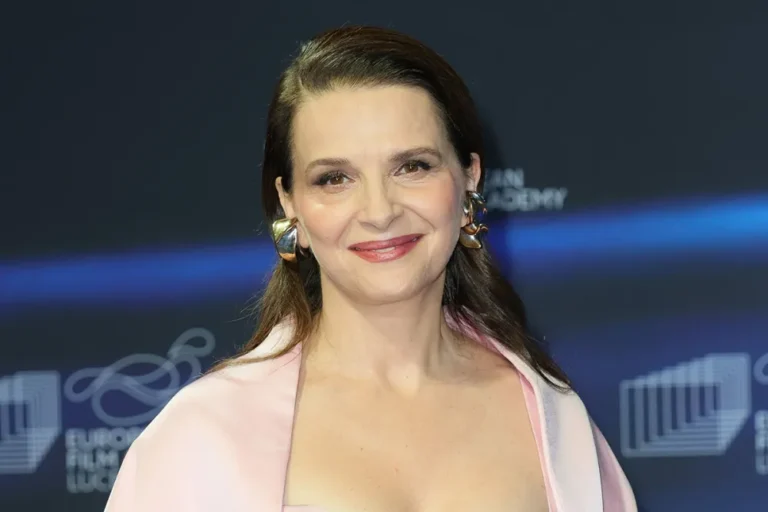
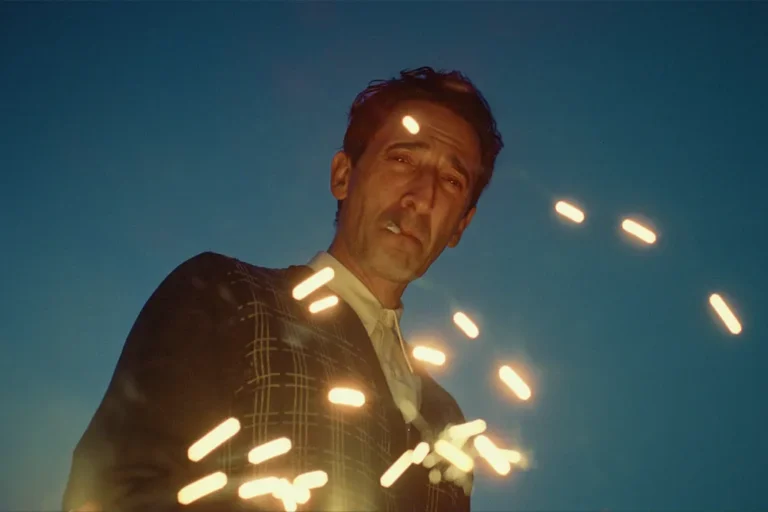

+ There are no comments
Add yours